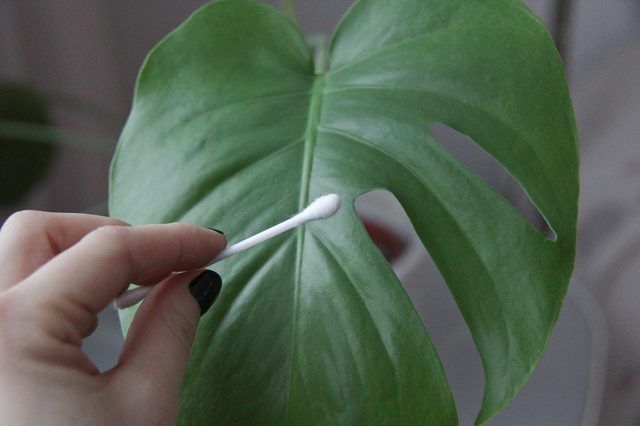Bulbs
Flower Basics
Flower Beds & Specialty Gardens
Flower Garden
Garden Furniture
Garden Gnomes
Garden Seeds
Garden Sheds
Garden Statues
Garden Tools & Supplies
Gardening Basics
Green & Organic
Groundcovers & Vines
Growing Annuals
Growing Basil
Growing Beans
Growing Berries
Growing Blueberries
Growing Cactus
Growing Corn
Growing Cotton
Growing Edibles
Growing Flowers
Growing Garlic
Growing Grapes
Growing Grass
Growing Herbs
Growing Jasmine
Growing Mint
Growing Mushrooms
Orchids
Growing Peanuts
Growing Perennials
Growing Plants
Growing Rosemary
Growing Roses
Growing Strawberries
Growing Sunflowers
Growing Thyme
Growing Tomatoes
Growing Tulips
Growing Vegetables
Herb Basics
Herb Garden
Indoor Growing
Landscaping Basics
Landscaping Patios
Landscaping Plants
Landscaping Shrubs
Landscaping Trees
Landscaping Walks & Pathways
Lawn Basics
Lawn Maintenance
Lawn Mowers
Lawn Ornaments
Lawn Planting
Lawn Tools
Outdoor Growing
Overall Landscape Planning
Pests, Weeds & Problems
Plant Basics
Rock Garden
Rose Garden
Shrubs
Soil
Specialty Gardens
Trees
Vegetable Garden
Yard Maintenance
How to Care for Monstera
How to Care for Monstera. Monstera (Monstera deliciosa) goes by the colorful common names of windowleaf, Swiss cheese plant and split-leaf philodendron because of the holes in the large, glossy, mature leaves. A widely grown houseplant, it's native to rainforests of Central America, where this vine climbs high into trees. It's a landscape plant for...
Monstera (Monstera deliciosa) goes by the colorful common names of windowleaf, Swiss cheese plant and split-leaf philodendron because of the holes in the large, glossy, mature leaves. A widely grown houseplant, it's native to rainforests of Central America, where this vine climbs high into trees. It's a landscape plant for shady areas in U.S. Department of Agriculture plant hardiness zones 10 through 12. As a container plant, it typically reaches 6 to 8 feet tall.
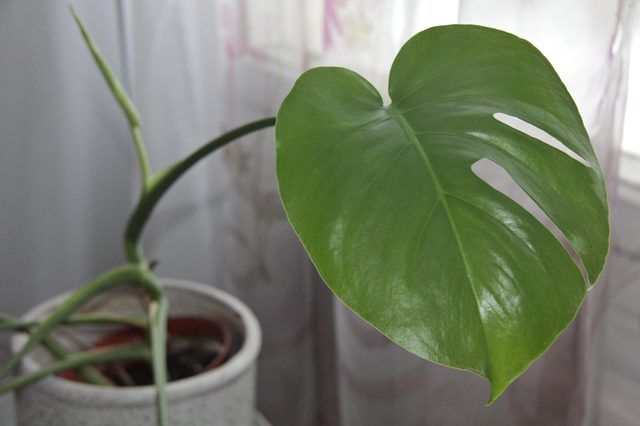
Outdoors, monstera prefers a soil rich in organic material. It is tolerant of a variety of soil types, growing in loamy, sandy, clay, acidic or slightly alkaline soils. The site should have good drainage. For container plants indoors, use a peat-based, well-draining potting mix. Supply a moss stick for the plant to climb on. Attach sphagnum moss around a wooden slat by wrapping it in place with nylon thread and then insert it behind the plant into the soil in its container. Use containers with drainage holes. In the landscape, provide monstera with a trellis if desired. Don't allow it to climb into living trees.
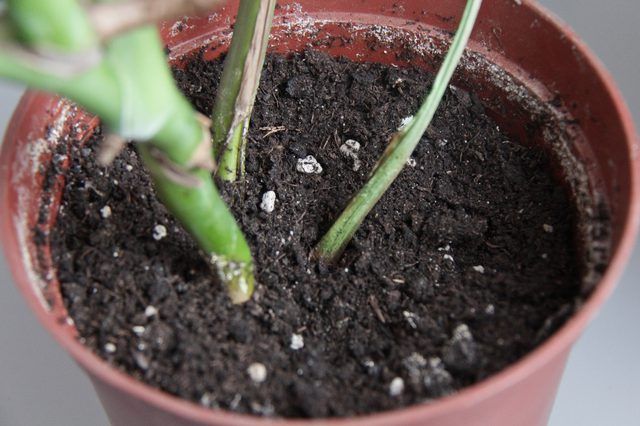
When actively growing, either outdoors or as a houseplant, keep the soil evenly moist. During fall and winter, allow the soil to partially dry between waterings. Water container plants thoroughly until water comes out the drainage holes. Use rain water or demineralized water. When humidity becomes low in indoor locations, mist monstera occasionally.
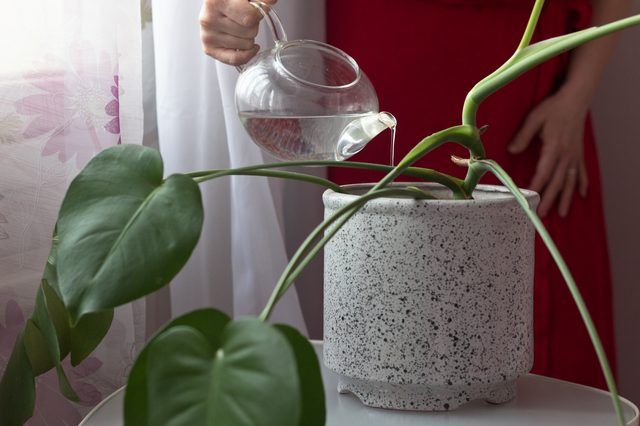
Outdoors, locate monstera in a shaded to partially shaded area, but keep it from direct sunlight. Indoors, it should be in bright, indirect light and should not receive direct sun. Plants grow best at temperatures between 70 and 75 degrees Fahrenheit. If you want to try for flower and fruit production, don't allow temperatures to get below 40 degrees F.
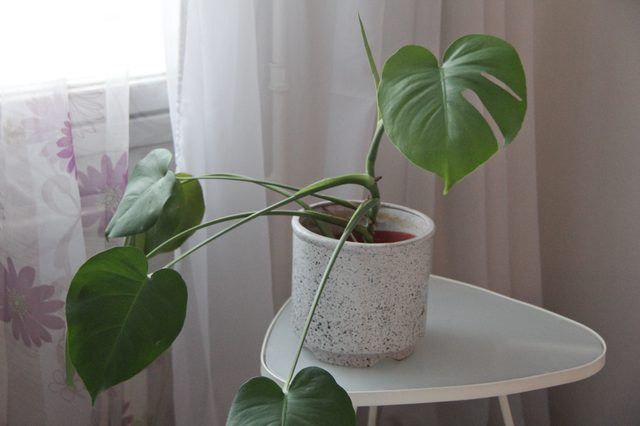
During spring and summer when monstera is growing, fertilize plants monthly with a general purpose water-soluble fertilizer such as 20-20-20 applied at the rate of 1 tablespoon per 1 gallon of water for outdoor plants and 1/2 teaspoon of water per 2 quarts of water for indoor plants. Don't fertilize plants during winter. Keep the plants to size by removing the ends of stems or branches, cutting back the growth to just above a leaf. Although you can prune monstera anytime, if you intend to root the cut-off pieces, prune the plants in summer. Clean the pruners with a cloth soaked in rubbing alcohol before you begin work. Prune off the upper aerial roots -- the bare, brown roots appearing on stems -- if you wish. Allow lower aerial roots to grow into the soil or onto the moss stick to help support the plant.

Monstera has few pests or diseases. Houseplants sometimes get infestations of mealy bugs, scales or spider mites. Remove scales and mealy bugs with cotton swabs soaked in soapy water as soon as you notice them. Wash spider mites and their webbings off with a strong spray of water. Occasionally wash off the leaves of houseplants with a water-moistened cloth. Use rain water to avoid water spots. Be aware that all plant parts, except for the ripe fruit, contain toxins and shouldn't be consumed by people or pets; some people are even sensitive to the ripe fruit.
